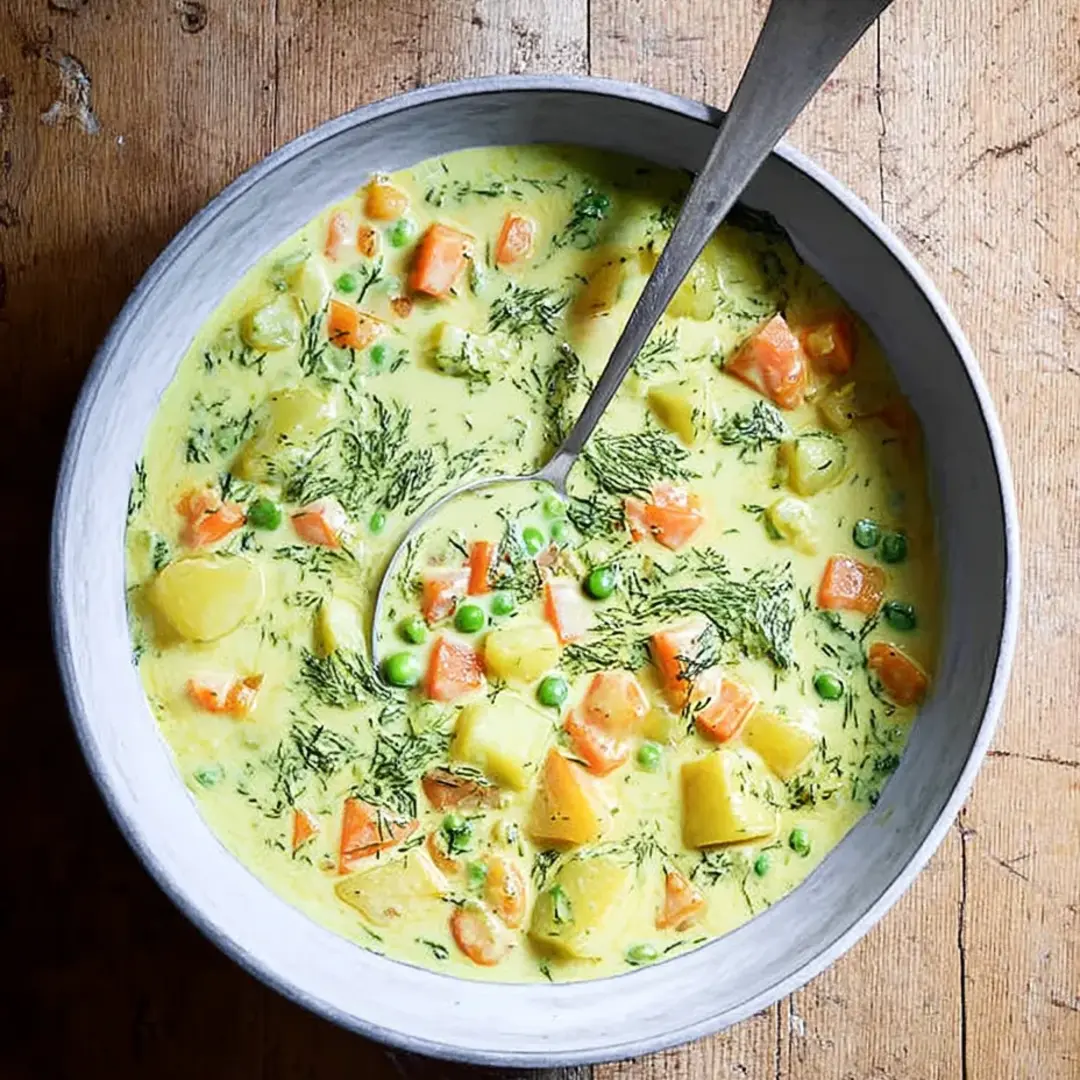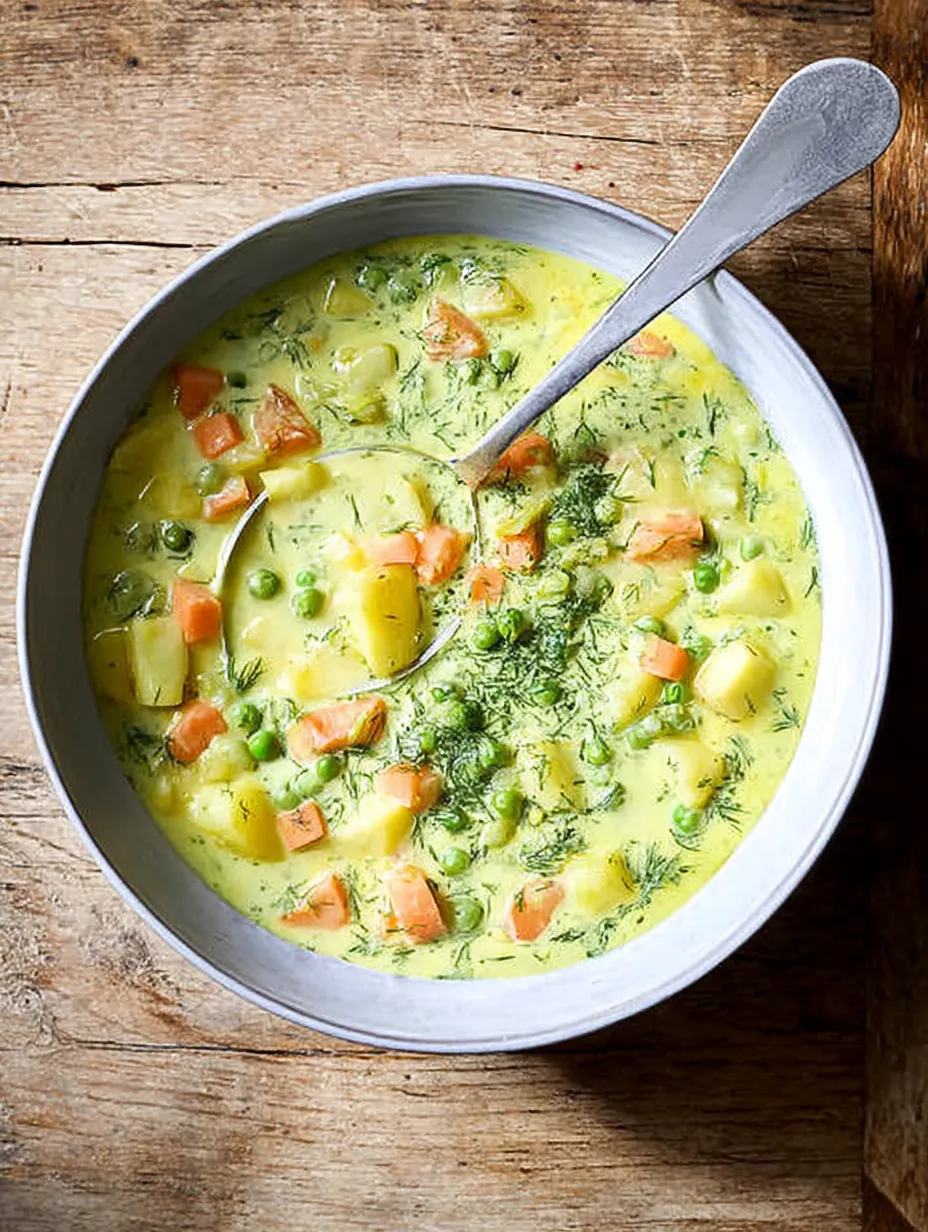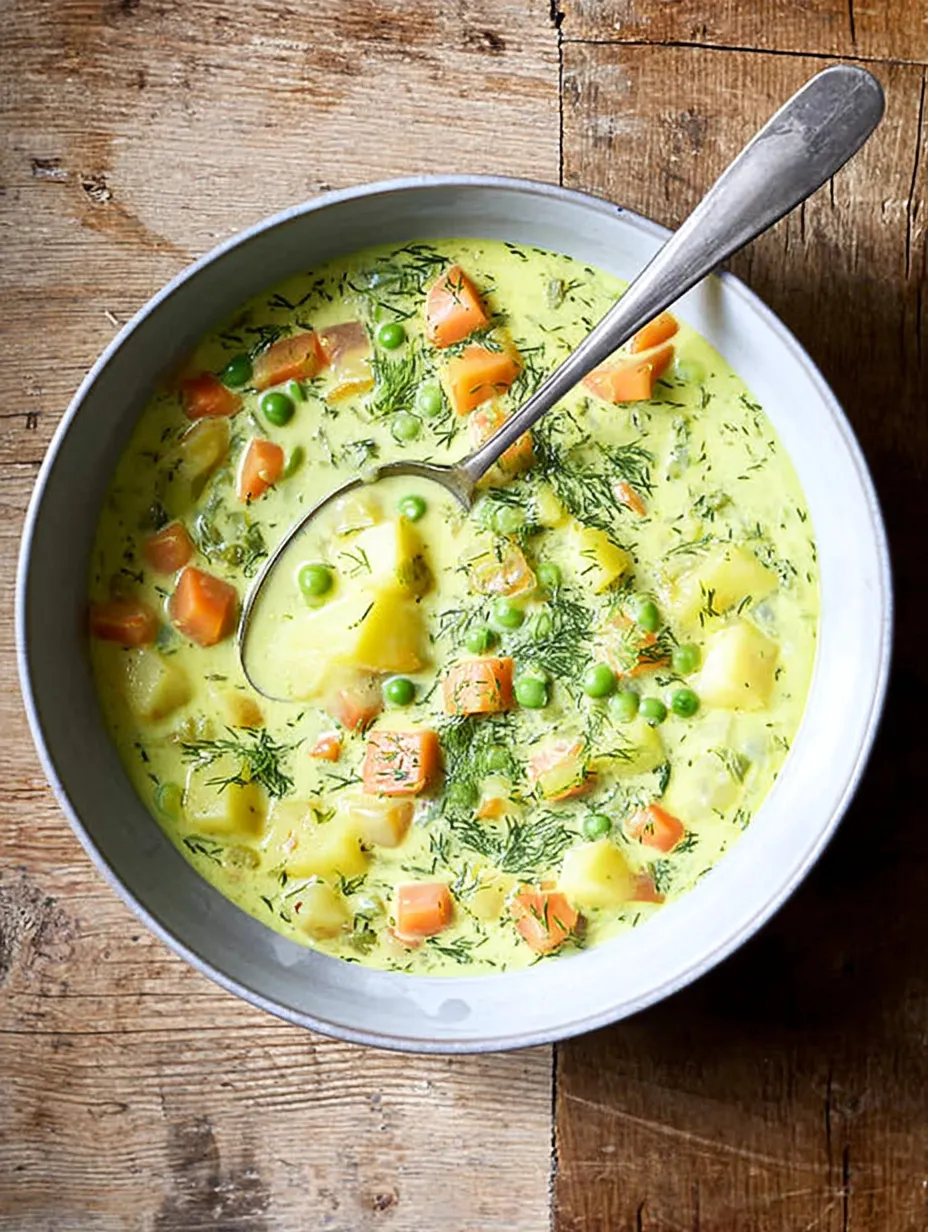 Pin it
Pin it
This comforting Polish Dill Soup (Zupa Koperkowa) brings together humble ingredients to create a truly spectacular dish that warms both body and soul. Tender potatoes and sweet carrots float in a silky broth that's infused with generous amounts of fresh dill – the signature ingredient that gives this soup its distinctive character.
Growing up in a Polish household, this soup was my mother's go-to comfort food whenever anyone was feeling under the weather or needed cheering up.
Zupa Koperkowa Ingredients
- 1 small bunch fresh dill (about 1 cup chopped): The star ingredient that provides the signature fresh, slightly grassy flavor
- 2 tablespoons butter: Creates a rich base for sautéing vegetables
- 1 medium onion, finely diced: Provides essential aromatic foundation
- 2 garlic cloves, minced: Adds depth and savory notes
- 3 medium waxy potatoes (about 1 pound): Holds shape well during cooking
- 2 carrots, peeled and diced: Adds natural sweetness and beautiful color
- 1 cup frozen green peas: Contributes bright flavor, color and texture
- 6 cups chicken or vegetable broth: Forms the liquid base
- ½ cup full-fat sour cream, room temperature: Creates the signature silky, creamy texture
 Pin it
Pin it
How to Make Polish Dill Soup
- Step 1: Prepare the aromatics
- Melt butter over medium heat. Add onion and cook until soft, then garlic for 30 seconds.
- Step 2: Add vegetables
- Add potatoes, carrots, and scallions. Cook 2-3 minutes, then add seasonings.
- Step 3: Simmer
- Add broth and bay leaves. Simmer 15-20 minutes until vegetables are tender.
- Step 4: Finish the soup
- Add peas, temper sour cream with broth, then stir into soup with dill.
- Step 5: Serve
- Garnish with reserved dill and optional sour cream dollop.
The Polish Way of Using Herbs
In Polish cuisine, herbs aren't mere garnishes but foundational ingredients used in generous quantities. Dill especially holds a place of honor in the Polish kitchen, appearing in soups, salads, with fish, and even in potato dishes.
 Pin it
Pin it
Traditional Serving Suggestions
- Fresh crusty rye bread or warm baguette
- Simple side salad with vinaigrette
- Hard-boiled egg halves in each bowl
- Crispy bacon bits for non-vegetarians
Creative Variations
- Replace potatoes with rice, barley, or small pasta
- Add chicken or pork meatballs
- Incorporate celery root or leeks
- Add pickle juice for tang
I learned this recipe from my grandmother, who would prepare it throughout the year but especially during early summer when fresh dill was abundant in her garden.
My final thought on this Polish Dill Soup is that it perfectly represents what I love most about traditional cooking – transforming simple, humble ingredients into something truly extraordinary.
Frequently Asked Questions
- → Is this soup similar to traditional Polish Dill Pickle Soup?
- While this soup has some similarities to Polish Dill Pickle Soup (Zupa Ogórkowa), it's a different variation that focuses on fresh dill rather than pickles. Traditional Dill Pickle Soup uses fermented cucumbers (pickles) for its distinctive tangy flavor. This version is milder and more herb-forward with fresh dill being the star ingredient.
- → Can I make this soup ahead of time?
- Yes, this soup actually tastes even better the next day after the flavors have had time to meld. You can make it up to 3 days ahead and store it in the refrigerator. When reheating, do so gently over medium-low heat to prevent the sour cream from curdling. You may need to add a little extra broth when reheating if the soup has thickened.
- → Can I freeze this soup?
- Soups with dairy like sour cream can sometimes separate when frozen and thawed. If you want to freeze this soup, it's best to do so before adding the sour cream and fresh dill. Freeze the base soup for up to 3 months, then when reheating, add the sour cream and fresh dill as directed in the recipe.
- → What can I substitute for marjoram if I don't have it?
- Marjoram has a mild, slightly sweet flavor similar to oregano but more delicate. If you don't have marjoram, you can substitute with an equal amount of oregano, though the flavor will be slightly stronger. Alternatively, you could use a mixture of thyme and basil, or even a pinch of sage as substitutes.
- → What are "waxy potatoes" and why are they recommended?
- Waxy potatoes are varieties that have less starch and more moisture and sugar. Common waxy varieties include Red Bliss, new potatoes, fingerlings, and Yukon Golds (which are actually medium-starch but work well). They're recommended for soups because they hold their shape when cooked and don't break down or become mealy, keeping the soup's texture pleasant with distinct potato pieces rather than thickening the broth.
